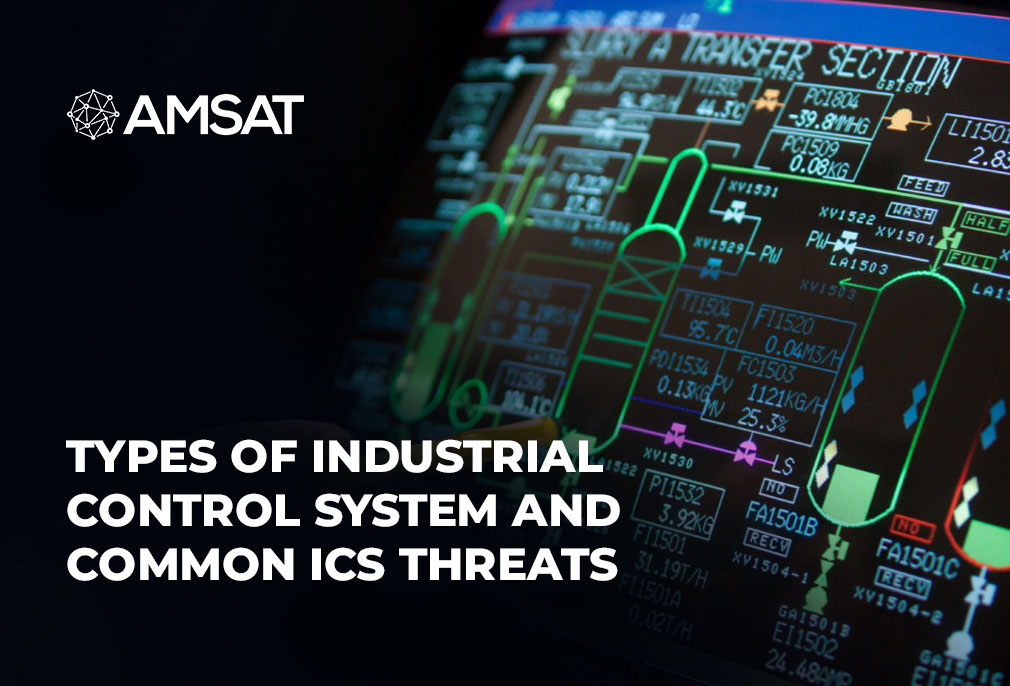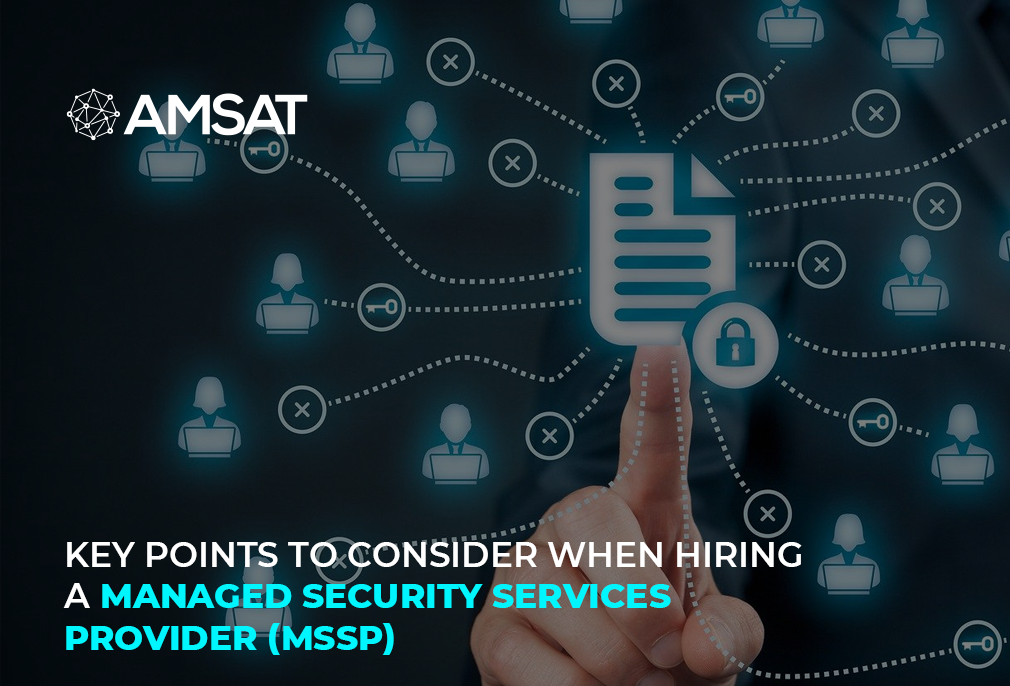Latest Blogs

By AMSAT June 29,2021
Types of Industrial Control System and Common ICS Threats
What is industrial control system?
Industrial control system (ICS) is a term used to define various types of control systems and associated procedures, which include the devices, structures, systems, and controls used to run and/or automate industrial procedures. Depending on the industry, each ICS works in a different way and is built to automatically manage tasks capably. Today, the devices and procedures employed in an ICS are used in virtually every industrial segment and critical setup such as the trade, transportation, energy, and water treatment industries.
The majority of industrial control systems today are, in one way or the other, connected to the internet. This introduces them to vulnerabilities like any other linked system. The difference is that interruption or penetration of an ICS network could lead to massive outages, millions of affected users and even national calamity. ICS security is a security basis that guards these systems against unintended or deliberate risks.
Types of ICS
Several industries take advantage of a wide range of ICS electronic applications. Almost all critical infrastructure and parts of industrial production need some type of industrial control system, as well as processes and devices associated with it.
Some of the most critical ICSs include:
Programmable Logic Controllers (PLCs)
These are solid-state control structures with sturdy, strong structure and a group of special functionalities, including an intuitive programming interface, I/O control, three modes control, calculation, counting and timing systems and sequential control.
PLCs are created to be highly robust, able to hold up to severe weather conditions such as very high and low temperatures, high moisture, electrical sounds and solid vibrations. These controllers are intended to screen and handle huge numbers of actuators and sensors, and they are prominent when compared to distinctive computer and processor systems owing to their high number of I/O setups.
Distributed Control System (DCS)
In a Distributed Control System, there are numerous control systems spread in a way that they can be separately controlled. They are systems of controllers, sensors and specific computers that are spread through industrial plants. Each element of the distributed control system has a special purpose, such as graphical presentation, process control, data procurement and data storage. The DCS serves like the industrial plant’s key system whose elements communicate with each other through a central control computer network, a kind of local area network.
Supervisory Control and Data Acquisition (SCADA)
The SCADA is a computer system that procedures and gathers data and employs operational controls over large distances. These systems were projected to solve communication problems, mostly data veracity and interruption issues arising from the many communication media. SCADA systems are used in many applications, including pipeline systems, power transmission and distribution, microwaves, satellites, and more.
Common ICS Threats
Protecting industrial systems is a difficult task. The majority of them were built before the first cyber threat emerged, and had no in-built exterior security controls considered for their design. Here are some key ICS threats.
External Threats and Targeted Attacks
External threat detection in the industrial control systems is of paramount importance. When you think that ICSs often come under the purview of chemical engineering, manufacturing, delivery and healthcare, there’s no doubt that these systems are often attacked by terrorist groups, hackers and other groups with ulterior motives. The objective of politically-driven attacks is typically focused on wreaking physical harm or operational trouble, while industrial spying attacks will be more fixated on stealing or damaging Intellectual Property (IP).
Internal Threats
Insider threats are well recognized when it comes to IT networks, but they can also represent a huge risk to industrial networks. From dissatisfied employees to contractors with malicious intent, the internal threat detection is tangible. Most ICS networks need virtually no authentication or encryption that controls or limits user activity, implying that any insider will usually have boundless access to any device that exists on the network.
Human Error
Making mistakes is human nature. Nevertheless, when errors are made on an ICS network, they can cost dearly with a possibility to weaken systems and undermine credibility. In fact, in numerous situations, human error is considered the key threat to an ICS network. Human errors can comprise making improper configurations, PLC programming errors or forgetting to oversee key metrics or signals.
Security Measures to Secure ICS against Threats
Here are the three key methods that can secure ICS systems against any threats.
1) Protecting the Network
Industrial organizations seeking to shield their networks should ensure they have a good network design in place. They should then separate their networks by implementing the ISA IEC 62443 standard, protect all wireless applications, and discover secure remote access solutions to help with quick resolution of problems.
2) Protecting the Endpoints
OT experts might feel their companies’ endpoints are protected against digital attacks, but they’re mistaken. The moment workers, contractors, or supply chain staffs bring their laptop or USB within the limit of the business network, security rules are often disregarded.
It is important to ensure all endpoints are protected and to prohibit staff from connecting their own personal devices to the network. Certainly, cybercriminals can attack PC-based endpoints in the OT environment. Companies must also secure their IT endpoints against attacks that navigate the OT setting.
3) Protecting the Controllers
Digital actors can gain access to critical devices that cause a company’s systems to malfunction. However, those wicked people have no direct way of doing so without gaining access to the control level.
Businesses can protect industrial controllers against digital attacks by increasing their detection capabilities and visibility into ICS changes and threats, executing security measures for susceptible controllers, monitoring for doubtful access and change control, and noticing/controlling threats in a timely manner.
Conclusion
We live in an inter-connected world today. Connectivity has made our personal lives easier, while organizations use this facility to boost productivity. The reason companies, large and small, are putting ICS systems online is that the jobs that once were done manually can now be carried out remotely or with the aid of automation.
To secure ICS systems against today’s online security threats, organizations must take adequate steps to come up with effective industrial security programs. Challenging though it may be, but doing so will help the organizations protect their systems from threat actors and cybercriminals in the long run.
TAGS
- ICS Threats
- Security Updates
Recent Blogs
Ready to Get Started?
Our specialists are ready to tailor our security service solutions to fit the needs of your organization.










